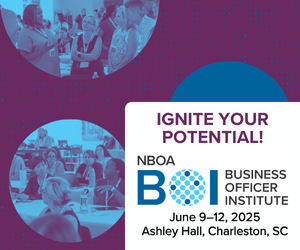
NBOA President and CEO
This past fiscal year, NBOA staff content experts have focused on alternative business models for independent schools. From West Coast to East and many places in between, one angle that frequently surfaced was board of trustees’ increased reliance on advancement, among other measures, to restrain tuition increases and moderate financial aid demand from families.
News in late June did not mitigate concern with regard to this strategy. A report from Giving USA found that giving among individuals fell 3.4% last year. Two thirds of all donated funds come from individuals, so even though donations from corporations and foundations increased, total giving fell 1.7%. Most agree this is due to tax law changes in late 2017 that doubled the standard deduction and reduced the number of taxpayers itemizing for charitable contributions and other expenses. In fact, the number of itemizers declined by a whopping 60% this past year.
The education sector is no exception to the rule, as detailed in a recent Inside Higher Ed article. Although higher-ed contributions actually increased thanks to larger gifts from fewer donors, K-12 education saw a decline in giving in 2018 following four years of growth. Individual alumni giving rates are expected to decline, according to the Giving USA report, and declines in giving among younger alumni are particularly worrisome, as habits established early in adulthood could stick in later years when they have more of a nest egg to contribute.
Therefore, whether your school’s concern is smaller donations to your annual fund or larger gifts for your school’s capital campaign or endowment, the outlook is troubling.
A few things are for sure. The financial resources for our schools have to come from somewhere. If it is not tuition revenue, fundraising and endowment draws are the next viable contributors. At the same time, however, school leaders must educate their boards of trustees about the current fundraising environment and identify a long-range financial strategy that includes a realistic assessment of a school’s fundraising capacity. Business officers get frustrated by financial uncertainty, and rightfully so. One strategy to combat this is shifting your collected annual fund resources to the following fiscal year. By doing so, the school is dealing with actual numbers without the fear of facing a year-end fundraising deficit.
Now more than ever, business officers and advancement professionals would do well to be in close communication about giving levels and strategies so that schools aren’t caught off guard and under-resourced. And independent schools, ever adept at charting their own course, will continue to find their own solutions.





